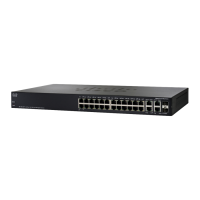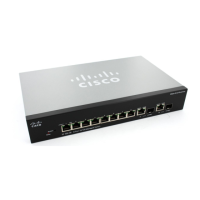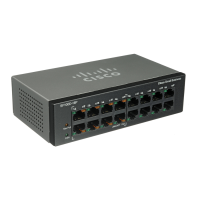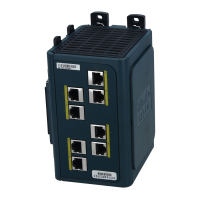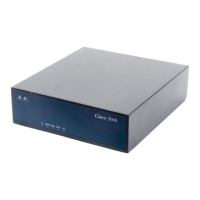Port Management: Unidirectional Link Detection
Configuring UDLD
Cisco Small Business 200, 300 and 500 Series Managed Switch Administration Guide (Internal Version) 153
10
• Fiber Port UDLD Default State—This field is only relevant for fiber ports.
The UDLD state of copper ports must be set individually in the UDLD
Interface Settings page. The possible states are:
- Disabled—UDLD is disabled on all ports of the device.
- Normal—Device shuts down an interface if the link is unidirectional. If
the link is undetermined, a notification is issued.
- Aggressive—Device shuts down an interface if the link is unidirectional
or undetermined.
STEP 3 Click Apply to save the settings to the Running Configuration file.
UDLD Interface Settings
Use the UDLD Interface Settings page to change the UDLD state for a specific
port. Here the state can be set for copper or fiber ports.
To copy a particular set of values to more than one port, set that value for one port
and use the Copy button to copy it to the other ports.
To configure UDLD for an interface:
STEP 1 Click Port Management > UDLD > UDLD Interface Settings.
Information is displayed for all ports on which UDLD is enabled, or, if you have
filtered only a certain group of ports, information is displayed for that group of
ports.
• Port—The port identifier.
• UDLD State—The possible states are:
- Disabled—UDLD is disabled on all fiber ports of the device.
- Normal—Device shuts down an interface if it detects that the link is
unidirectional. It issues a notification if the link is undetermined.
- Aggressive—Device shuts down a port if the link is unidirectional or
undetermined.
• Bidirectional State—Select the value of this field for the selected port. The
possible states are:
- Detection—The latest UDLD state of the port is in the process of being
determined. Expiration time has not yet expired since the last
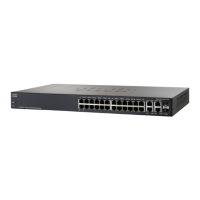
